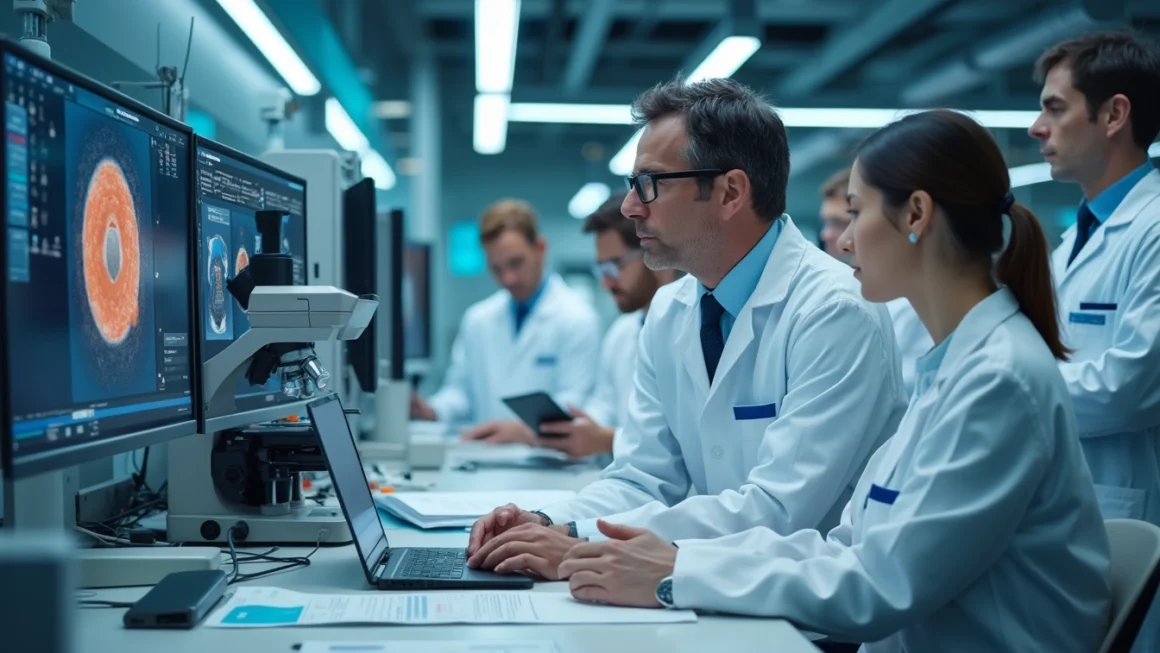In a groundbreaking development, researchers have successfully created the world’s first “synthetic” embryos without using sperm, eggs, or fertilization. This remarkable achievement, led by scientists at the Weizmann Institute in Israel, marks a significant milestone in the field of embryology and stem cell research.
The Breakthrough: Creating Embryos from Stem Cells
Table of Contents
The team of scientists, headed by Professor Jacob Hanna, utilized mouse stem cells to generate embryo-like structures that closely resemble natural mouse embryos. These synthetic embryos displayed key features such as a beating heart, blood circulation, the beginnings of a brain, and a yolk sac where the embryo develops and receives nutrients in its early stages.
This innovative approach bypasses the need for fertilized eggs, opening up new possibilities for studying early embryonic development and potentially addressing issues related to pregnancy loss and birth defects.
Implications for Research and Medicine
Advancing Embryonic Development Studies
The creation of synthetic embryos provides scientists with a powerful tool to investigate the intricate processes of early embryonic development. By manipulating these artificial structures, researchers can gain deeper insights into how organs form and how genetic and environmental factors influence embryo growth.
Potential for Drug Testing and Toxicology Studies
These synthetic embryos could serve as valuable models for testing new drugs and assessing their potential effects on fetal development. This could lead to safer and more effective medications for pregnant women and reduce the risk of birth defects caused by pharmaceutical interventions.
Addressing Infertility and Pregnancy Loss
The research may pave the way for new treatments for infertility and recurrent pregnancy loss. By understanding the mechanisms that drive successful embryonic development, scientists could develop targeted therapies to support healthy pregnancies and reduce the incidence of miscarriages.
Ethical Considerations and Limitations
While this breakthrough holds immense potential, it also raises important ethical questions. The ability to create embryo-like structures without traditional fertilization challenges our understanding of what constitutes life and when it begins. As research in this field progresses, it will be crucial to establish clear ethical guidelines and regulations.
It’s important to note that these synthetic embryos are not capable of developing into viable fetuses. They lack the potential to grow into a fully formed organism, as they do not have the complete set of tissues required for fetal development.
Future Directions and Challenges
The next steps for researchers involve refining the technique and exploring its applicability to human stem cells. While the current study focused on mouse embryos, the ultimate goal is to develop similar methods for creating synthetic human embryos for research purposes.
However, significant challenges remain. Human embryonic development is more complex than that of mice, and creating accurate synthetic models will require overcoming numerous technical and biological hurdles. Additionally, the use of human stem cells for such research will necessitate careful consideration of ethical and legal implications.
Conclusion
The creation of synthetic mouse embryos represents a major leap forward in stem cell research and developmental biology. This breakthrough has the potential to revolutionize our understanding of early embryonic development and could lead to significant advancements in treating infertility, preventing birth defects, and developing safer medications for use during pregnancy.
As this field of research continues to evolve, it will be essential to balance scientific progress with ethical considerations and public dialogue. The coming years are likely to bring further exciting developments in this area, potentially transforming our approach to reproductive medicine and embryology.
For those interested in exploring how automation can streamline research processes and data analysis in fields like embryology, innovative automation platforms offer powerful tools to enhance scientific workflows and accelerate discoveries.




